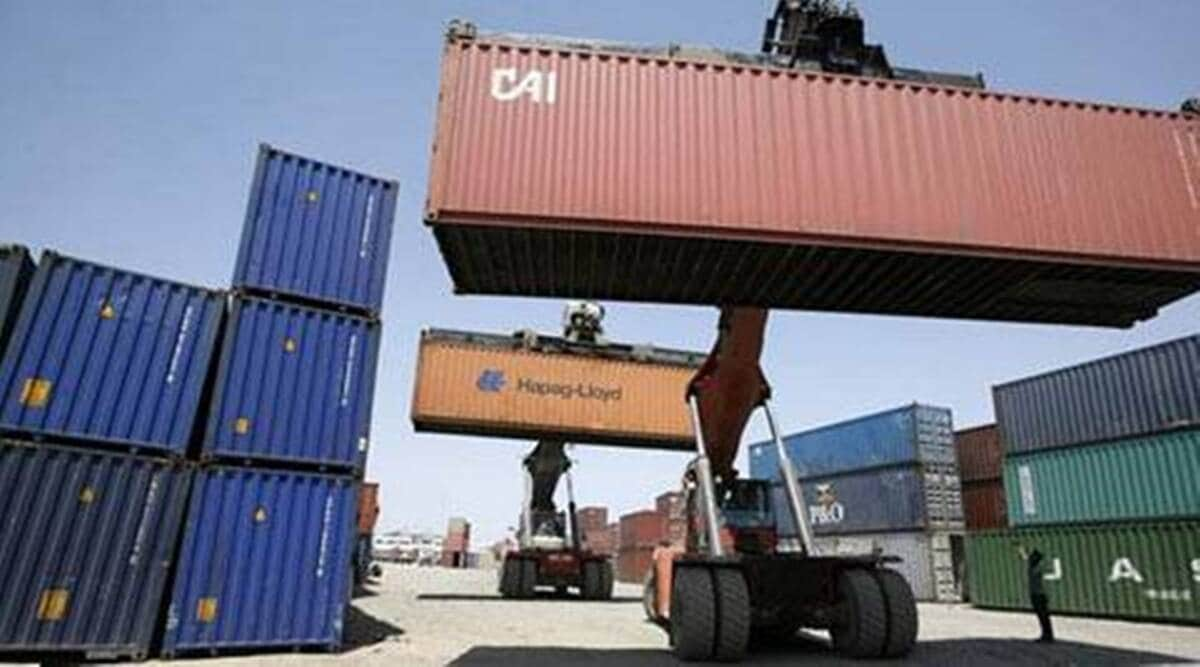 While topping $400 billion, exports have registered a 37 per cent increase compared to $292 billion in the previous fiscal and 21 per cent over the previous record high of exports of $330 billion set in FY2019, prior to the pandemic.
While topping $400 billion, exports have registered a 37 per cent increase compared to $292 billion in the previous fiscal and 21 per cent over the previous record high of exports of $330 billion set in FY2019, prior to the pandemic. As India surpassed its merchandise export target of $400 billion set for FY2022, Prime Minister Narendra Modi Wednesday hailed the achievement as “a key milestone” in the country’s “Aatmanirbhar Bharat journey”.
The target was achieved with 10 days to spare — exports crossed $400.8 billion on March 21 and there’s a likelihood that total exports for the fiscal may cross $410 billion by the end of the month.
While topping $400 billion, exports have registered a 37 per cent increase compared to $292 billion in the previous fiscal and 21 per cent over the previous record high of exports of $330 billion set in FY2019, prior to the pandemic.
India’s imports during the period have also surged to a record high level of over $589 billion during the fiscal, taking India’s trade deficit to a record $188.2 billion.
The surge, the caution
In a Twitter post, Modi said: “India set an ambitious target of USD 400 billion of goods exports and achieved this target for the first time ever. I congratulate our farmers, weavers, MSMEs, manufacturers, exporters for this success. This is a key milestone in our Aatmanirbhar Bharat journey.”
Officials said a preliminary analysis showed that while commodity price hike had contributed to the rise in exports, many goods including auto components, motor vehicles, cereal preparations, buffalo meat, rice, carpets, processed fruits and juice also saw increases in overall export volumes despite stagnant or declining commodity prices.
Experts noted that another key factor driving the surge in exports is the pent-up global demand that was unmet during major waves of the Covid-19 pandemic. Expansionary monetary policy by developed economies in response to the economic impact of the pandemic has also boosted demand for Indian exports.
Engineering goods were the largest contributors to the growth in exports, growing at nearly 50 per cent and expected to hit $110 billion by the end of FY2022. Electronics goods exports rose by 42.8 per cent in the first 11 months of the fiscal, while gems and jewellery exports grew by 57.3 per cent boosted by a rise in gold prices.
Export of petroleum products grew by 147.6 per cent, driven by a steady increase in crude oil prices. Other products which recorded strong growth in exports include organic and inorganic chemicals, readymade garments, meat and dairy products as well as marine products.
Commerce and Industry Minister Piyush Goyal highlighted that India had significantly boosted exports to key trading partners with outbound shipments to the UAE increasing by 65 per cent during the fiscal and exports to the US increasing by 46 per cent.
Trade expert Biswajit Dhar, a professor at Jawaharlal Nehru University in New Delhi, said that high commodity prices, particularly in the case of crude oil and gold, had contributed significantly to growth in total value of exports. He noted that headwinds to a global economic recovery due to the ongoing Russia-Ukraine conflict could, however, dent India’s exports in the upcoming fiscal, particularly in the case of sectors like electronics and machinery exports which have been key growth areas.
According to UNCTAD estimates based on national trade statistics, the positive trend for international trade in 2021 (calendar year) was largely the result of increases in commodity prices, subsiding pandemic restrictions and a strong recovery in demand due to economic stimulus packages. “As these trends are likely to abate, international trade trends are expected to normalize during 2022,” UNCTAD noted in a February 2022 update.
A Sakthivel, president of the Federation of Indian Export Organisations, said the achievement of $400 billion in exports was the fulfilment of a “dream” and that exporters could look to target merchandise export of $500 billion in the next fiscal.
- The Indian Express website has been rated GREEN for its credibility and trustworthiness by Newsguard, a global service that rates news sources for their journalistic standards.

